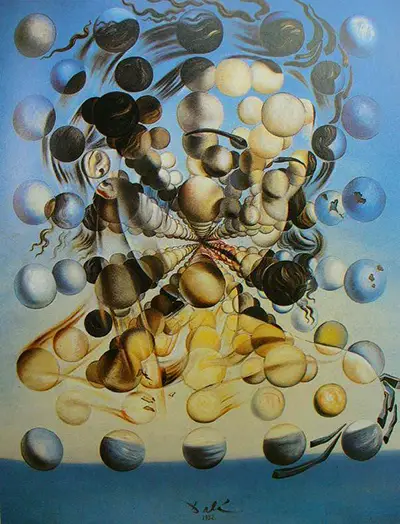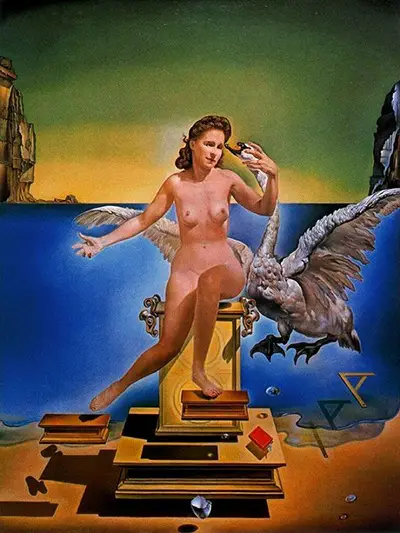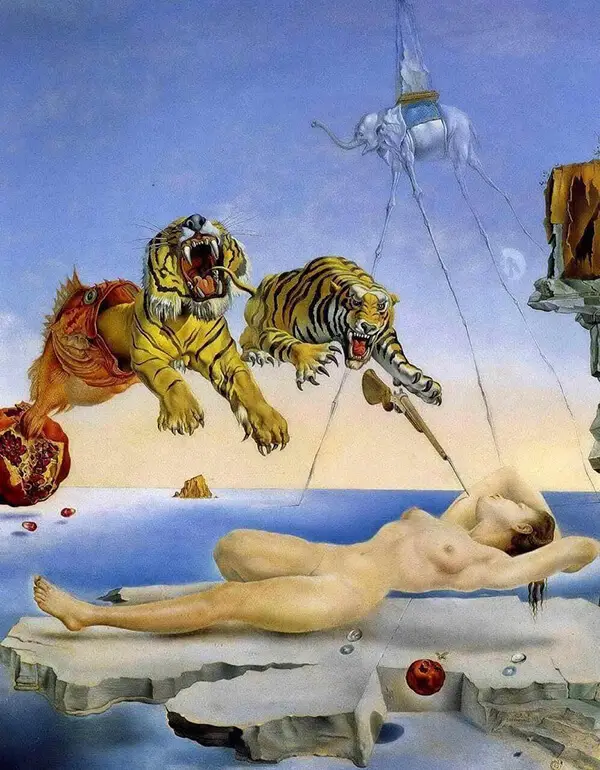She was born as Elena Ivanovna Diakonova in the Russian Empire in 1894, around a decade before Salvador arrived in Northern Spain. She travelled to Europe for treatment for tuberculosis in her mid to late teens and it was then that she met her first husband, Paul Éluard. She decided to stay on as a result and began a long relationship with the Frenchman - they settled in Paris. Soon afterwards they would meet a number of artists and set about creating the Surrealist movement. Her husband himself was a poet and actually came up with the label for this forward-thinking group. Fellow members included Louis Aragon, Max Ernst and André Breton but some saw Gala as a devisive figure who caused friction between some of its members. She started a relationship with Max Ernst, with the continued backing of Eluard who enjoyed their open relationship.
Husband and wife decided to visit a young, developing artist by the name of Salvador Dali in August 1929 and from that point onwards, the lives of all three would never be the same again. Salvador himself was most likely a virgin at this point and perhaps needed the firm hand of a woman his senior to help him get over some of his anxieties with the opposite sex. By now, she had travelled around several countries and developed a confidence which would have greatily attracted the young Spaniard, just as it had other members of the Surrealist group. Her Russian roots also added to her exotic appeal, alongside her open minded attitudes to many things in life. Many famous artists from the past have had turbulent relationships, perhaps suggesting that creative spark often comes hand-in-hand with some querks of personality.
Salvador and Gala
These two passionate individuals decided to move in together almost immediately but Dali's decision to pursue a married woman would cause him friction with his own father, a situation that he used as inspiration for his work at around that time. The bond of Dali and Gala was too strong to be broken by anybody and they continued their affair despite criticism from different quarters. She divorced Eluard in 1929, but was still seen as unsuitable for Salvador, who had been brought up as a Catholic. His relationship with his own religion would fluctuate many times over his lifetime. They married eventually in 1934 in a civil ceremony, which was done so in order to avoid fuelling the reactions to their controversial relationship any further. They would spend fifty years together in relative harmony.
Gala would serve, pretty much immediately, as the artist's muse for a large number of works. As their relationship developed he would reflect any changes in how he depicted his wife. She had earlier sat for a number of other artists before she had even met Dali, and so this was nothing new to her. By the 1930s Dali would actually feature Gala within some of his more methods of leaving his own signature. He experimented with where it was left, often incorporating it into the particular composition. She would also start to help him out on the business side of things, with which he clearly needed help. She worked as his agent and also attempted to Dali to turn his reputation into money, maximise his potential as a brand. Both led extravagent lifestyles, and so this development seemed necessary.




